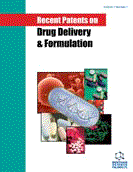Abstract
Introduction: The solid lipid nanoparticles (SLNs) of Acyclovir (ACV) were fabricated with Soya lecithin and Fractionated Coconut oil (medium chain glyceride) as a first time combination.
Methods: The research was focused on developing ACV-SLN by using high pressure hot-homogenization technique. The ingredients were used in different concentrations and ratios to identify the best formulation design. The tween 80 and Pluronic F-68 were used in various concentrations in formulation design to assess the impact on the fabrication and evaluation of SLNs. The impact of nanotechnology gain to play a vital role in the topical pharmaceutical products and the related patents will play a significant role in related industries. Results: The SLNs were subjected to various characterization techniques such as XRD, FTIR, Master sizer analysis and zeta potential. The mean particle size was determined by master sizer and zeta sizer. Transmission electron microscopy (TEM) was used as a tool to analyze the morphology and other features. The zeta potential and drug entrapment efficiency (EE%) were also determined for the prepared ACV-SLNs. The efficiency of drug release from prepared formulations was studied by using in vitro study with the utilization of dialysis membrane technique. SLN dispersions exhibited the average size in nano range. Conclusion: SLNs with small particle size found to have predetermined encapsulation efficiency, and relatively high loading capacity and predetermined in vitro drug release profile.Keywords: TEM, zeta potential, release kinetics, pluronic F-68, skin drug delivery.
Graphical Abstract
Article Metrics
 26
26 4
4














